The Ellen DeGeneres Campus of the Dian Fossey Gorilla Fund Signals New Future for Gorilla Conservation, Education, Research, and Tourism in Rwanda
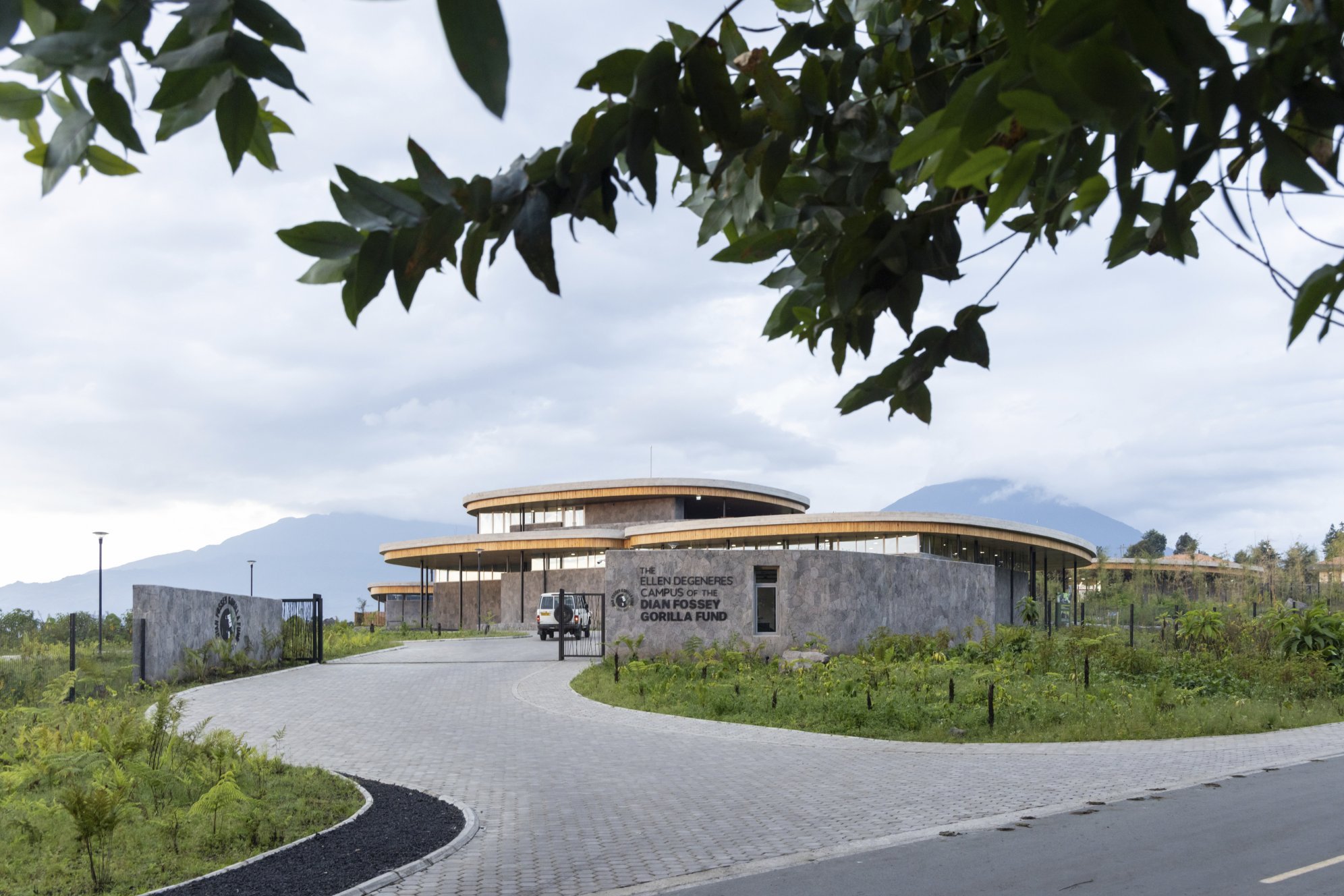
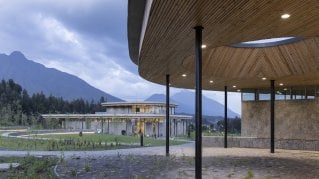
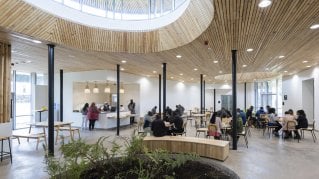
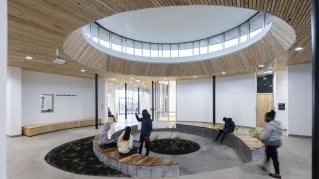
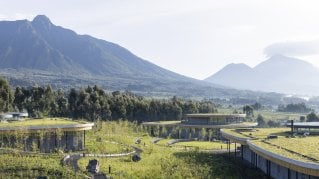
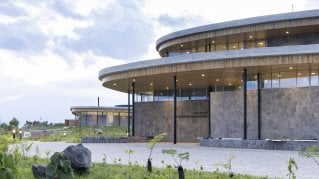
The campus, positioned in the Virunga Mountains of Rwanda is a global model for ecologically responsible design and construction
MUSANZE DISTRICT & KIGALI, Rwanda, June 7, 2022 – The Dian Fossey Gorilla Fund, The Ellen Fund, and MASS Design Group celebrated the opening of The Ellen DeGeneres Campus of the Fossey Gorilla Fund in a ceremony at the campus this week. The new multi-building campus is a $15 million investment that anchors the region as a conservation hub for ecological preservation and education in Africa. The 12-acre campus models MASS’s “Purpose-Built” methodology, which balances and evaluates capital infrastructure alongside a project's mission, design, and feasibility. Local labor and materials were used throughout design and construction to minimize the campus footprint, develop an immersive reforested landscape, and ensure job training and economic return to the local community while creating a modern facility for public use and education.
Adjacent to the Volcanoes National Park on the border of Rwanda and the Democratic Republic of the Congo, the campus has three main buildings: the Sandy and Harold Price Research Center, the Cindy Broder Conservation Gallery, and the Rob and Melani Walton Education Center, as well as housing for visiting students and researchers. An extensive living laboratory was created on the former agricultural site through the planting of more than 250,000 native plants and the use of green roofs, rainwater harvesting, and a constructed wetland for wastewater treatment. The campus was named one of Africa’s 10 most anticipated architectural projects, featured on CBS’s 60 Minutes, and in Architectural Digest.
“From the outset, the mission of this project was focused on creating a space to engage the many stakeholders in conservation—students, scientists, tourists, conservation partners, community members—to advance our collective goal of saving gorillas and more broadly, the planet,” said Dr. Tara Stoinski, the Fossey Fund’s President and Chief Scientific Officer. “The beauty of the campus elevates people’s thinking about conservation, helping them realize how important conservation is. This shift is not just important for the Fossey Fund, but for the region and the world.”
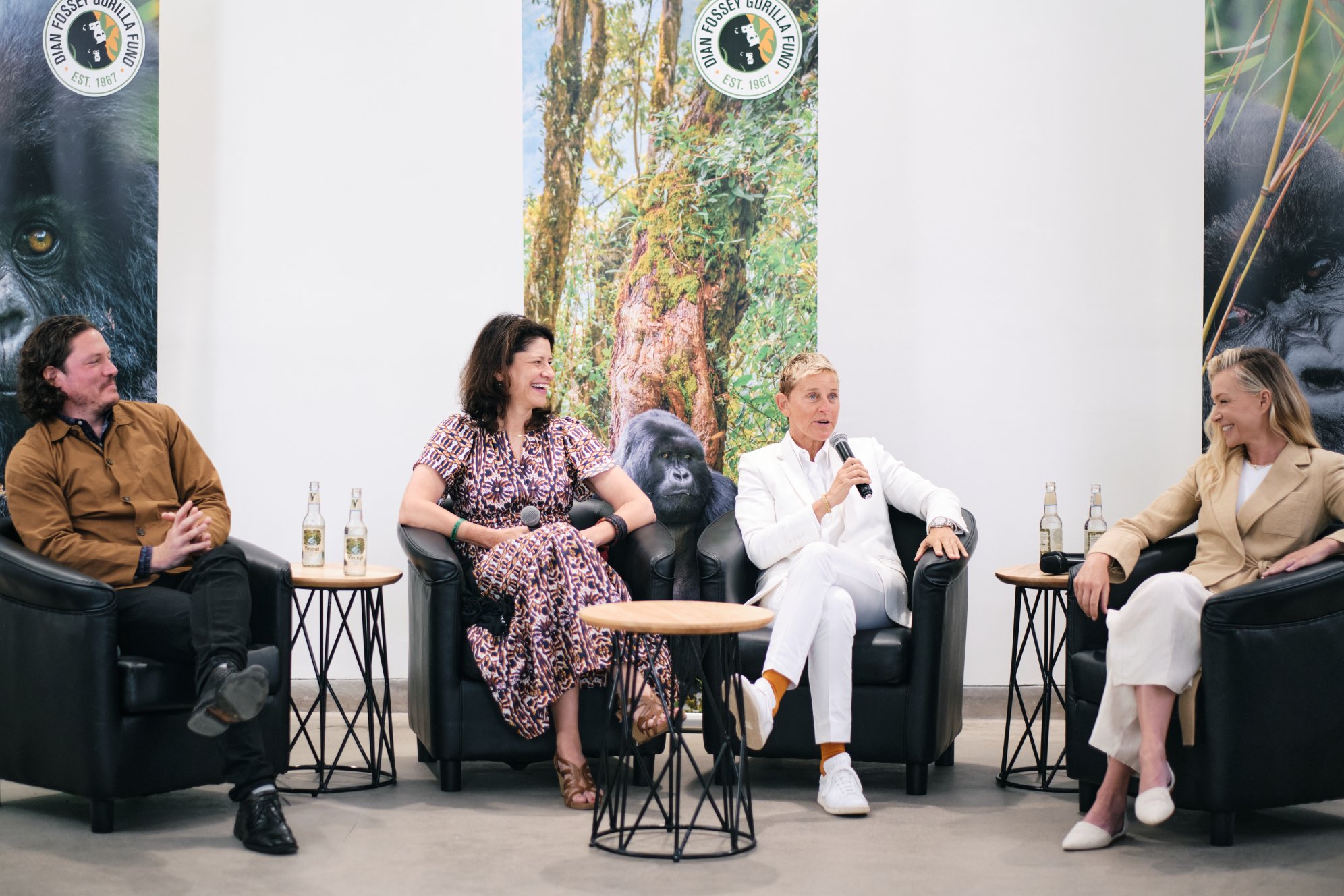
From the start, MASS and the Fossey Fund worked in partnership to develop all aspects of the project—from visioning, architectural and landscape design, engineering, construction, furniture fabrication, exhibition design, and media—while leveraging its impact on the surrounding community and advancing the Fossey Fund’s mission. The campus also marked the first project completed by MASS’s construction company, MASS.Build. The project employed more than 2,400 Rwandans in its design and construction, accounting for 99 percent of the total labor.
"The campus demonstrates how new infrastructure can catalyze conservation and species protection,” said Michael Murphy, MASS Design Group Founding Principal and Executive Director. ¨When new buildings, landscapes, and institutions are conceived in the way that the Fossey Fund and Ellen DeGeneres have imagined—to have as much impact as possible—reciprocal opportunities are created. For this campus, that meant the prioritization of local labor, customized fabrication of furniture and fittings created by Rwandan artisans, and environmental stewardship that aligns with the goals of conservation and habitat protection. The campus will do more than inspire a generation of conservation activists in Rwanda, it will model new ways for global conservationists to bind ecosystems and communities in support of one another."
Purpose-Built: MASS and the Dian Fossey Gorilla Fund Collaboration
Founded by the legendary Dian Fossey, the Dian Fossey Gorilla Fund is the world’s largest and longest-running organization dedicated to gorilla conservation. Its work combines daily protection and study of individual gorillas with people-centered programs aimed at training the next generation of African conservationists and addressing the basic needs of the people who share the gorillas’ forest home through food and water security, livelihood, and education programs. Once feared by Dian Fossey to be extinct by the year 2000, mountain gorillas represent a rare conservation success story, with the population in the region growing from a low of 250 in the 1980s to more than 600 today.
MASS and the Fossey Fund began working together in 2015. Led through the ”Purpose Built” process by MASS Principal Patricia Gruits, MASS helped the Fossey Fund assess its design needs based on its mission to make gorillas an entry point for a lifetime of conservation activism. The “Purpose Built” approach considers how an organization can make systemic change and aligns design to support the mission through a capital project feasibility study. When DeGeneres and her wife, Portia de Rossi, announced the official creation of The Ellen Fund, a nonprofit that works to protect endangered animals, they also named the Dian Fossey Gorilla Fund as their first grant recipient. Their support enabled the Fossey Fund to move forward on the ambition to build a permanent home in Rwanda, accelerating its science and conservation work.
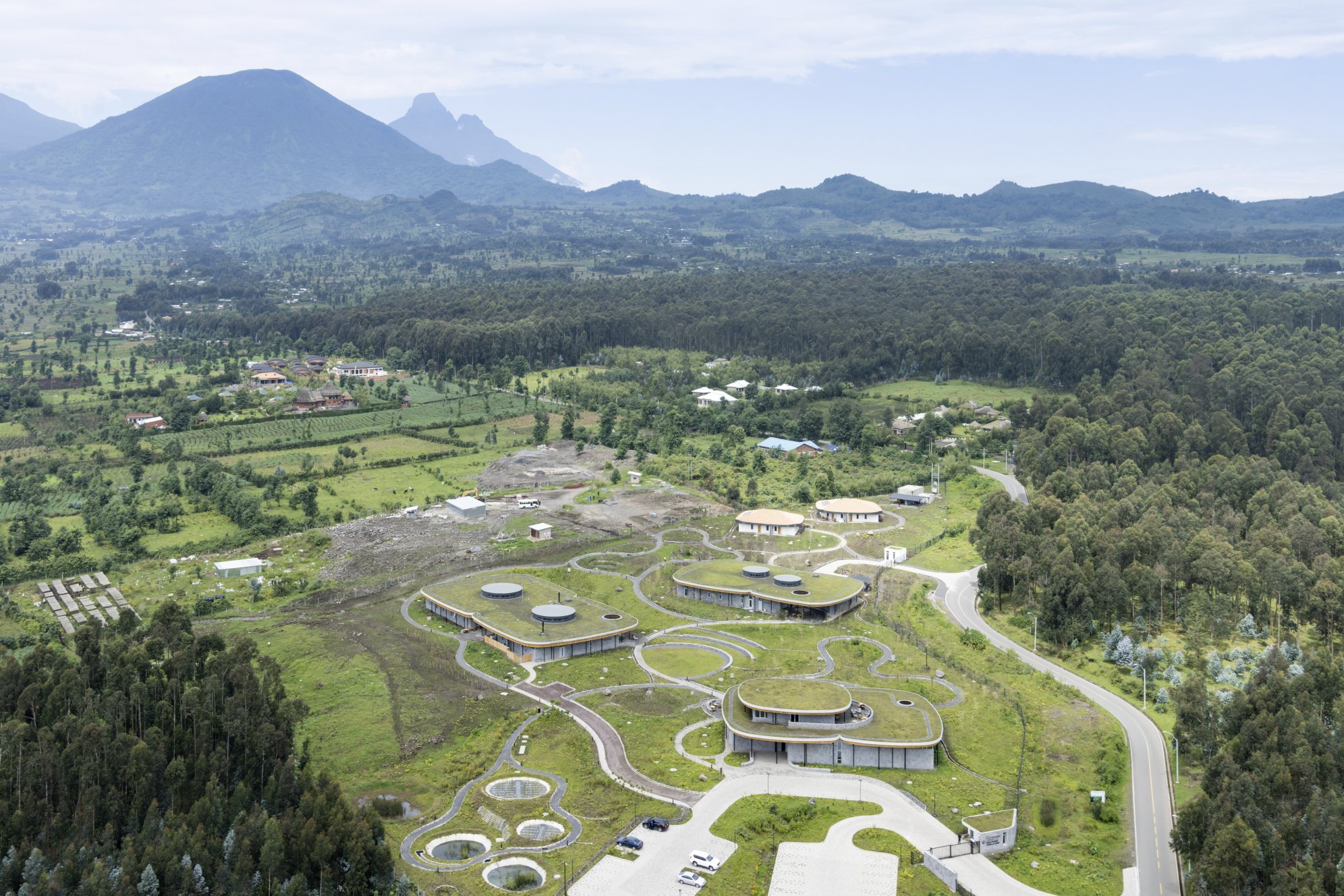
Engagement on Campus: Training, Research, and Education Spaces
The Dian Fossey Gorilla Fund is one of the primary training organizations of young African scientists in conservation. The majority of research about African wildlife and biology is authored by Western scientists. The Fossey Fund is committed to inspiring the next generation of African scientists invested in critical conservation work and hosts hundreds of Rwandan university students and thousands of primary and secondary students annually. The Sandy and Harold Price Research Center, provides a five-fold increase in laboratory space, enabling the Fossey Fund’s scientific research and teaching. The Rob and Melani Walton Education Center provides critical teaching space, including classrooms, a computer lab, and library. The campus also includes housing to provide 30 students and visiting researchers with greater access to campus resources and park.
“The Ellen Campus represents a huge expansion of our teaching and laboratory spaces, enabling us to not just increase but transform our programs to study gorillas and their critical forest habitat and bring educational opportunities to early-career African scientists and members of the local community,” said Felix Ndagijimana, the Fossey Fund’s Director of Rwanda programs.
The Role of Gorilla Ecotourism in Rwanda
Gorilla-inspired tourism plays a critical role in providing revenue for the park as well as supporting local communities through employment and revenue sharing. One of the Fossey Fund’s goals for the new space was to create a new experience for tourists coming to Rwanda.
The Cindy Broder Conservation Gallery is an immersive educational exhibit located at the campus entrance. Designed by the Fossey Fund and MASS, the exhibition tells the story of mountain gorilla research and conservation from Fossey’s time to today. It includes original, never before seen artifacts from Fossey’s almost two decades of work living amongst the gorillas and visual effects through a 360-degree immersive experience, as well as augmented and virtual reality opportunities to learn more about the conservation success of mountain gorillas. Generous donor contributions made these engagement spaces possible, including actor and conservationist Leonardo DiCaprio, who supported the creation of the 360-degree theater and computer lab. The building also includes a VIP conference room and outdoor overlook area on the second story for users to take in views of the campus and its volcano surroundings.
Design Inspiration: Materials, Landscape, and Sustainability
The campus design took inspiration from Dian’s original tent nestled in the forest at the Karisoke Research Center more than 50 years ago. From above, the buildings’ green roofs blend into the surrounding landscape context. The buildings’ footprints integrate seamlessly into the landscape topography, encouraging a natural flow from interior spaces to the exterior through a series of covered patios and connected path networks, all taking advantage of the surrounding volcanoes. The main campus buildings contain different scales of interior and exterior gathering spaces in response to the diversity of programs and inspired by the campfire gatherings at the original Karisoke Research Center. Encouraging interaction between visitors, staff, and researchers, the gathering spaces are designed to provide connection to the landscape and increase natural ventilation and daylight in the building.
The campus utilizes locally sourced materials to embody the Fossey Fund’s mission to conserve and limit its impact on the environment, as well as to enable it to blend seamlessly into its natural surroundings. MASS partnered with the global firm Transsolar on environmental engineering solutions throughout the project to prioritize access to natural daylight and ventilation, together with building comfort and performance. Green roof canopies hover above thick volcanic stone exterior walls, separated by a continuous glass clerestory that brings natural daylight into the interior spaces. The volcanic stones found onsite during excavation were crushed and used in the grout for the stone walls and as gravel for the trails across the campus. Volcanic stone is also used in the exterior building cladding. Regionally sourced pinewood adds warmth and texture to the exterior soffit and interior ceilings of the buildings. The student housing roofs use clay tiles, while native plant species are used on the main campus green roofs to enhance biodiversity and sequester carbon. The green roofs also provide research opportunities to study key ecological processes like pollination and reforestation.
As an extension of the Volcanoes National Park, the landscape design for the campus transformed the existing site from an agricultural plot to a reforested, biodiverse landscape that showcases four key gorilla habitat ecologies: mixed forest, bamboo, hagenia forest, and meadow. MASS worked with TEN x TEN, a Minneapolis-based landscape architecture practice, to design a regenerative landscape and green roofs complementary to the surrounding habitat. The land upon which the campus was built had been converted to agriculture and grazing space. As part of MASS and the Fossey Fund’s commitment to the regeneration of that land, more than 250,000 native plants were propagated and planted throughout the campus, creating a reforestation research site that might also inform future park expansion.
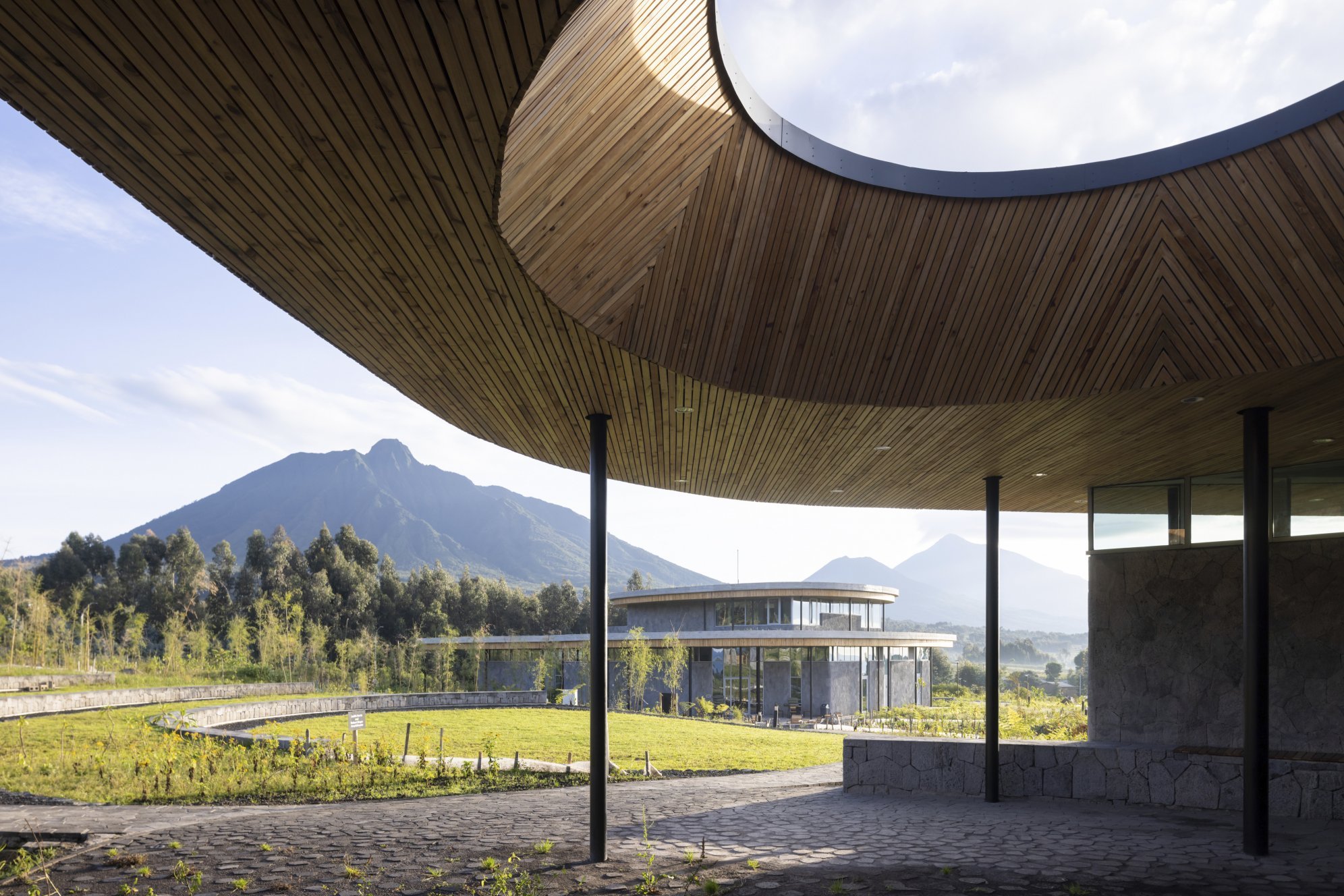
The campus design also prioritized water conservation by harvesting rainwater from building roofs for reuse including to flush toilets. Effluent wastewater is treated naturally in a constructed wetland, which features a series of ponds below the conservation gallery that filter and clean the water before it soaks back into the ground. The system, the first and only of its kind in Rwanda, is gravity fed, reducing overall energy use.
The landscape, water systems, and sustainability methods serve as an educational model for students and visitors motivated by conservation, and as a research demonstration for reforestation efforts the Fossey Fund is undertaking in the region. Across the campus, the Cleveland Metropark Zoo Interpretive Trails encourage visitors to explore and understand both the work of the Dian Fossey Gorilla Fund, and its sustainability initiatives. The Gorilla Trail leads visitors through a day in the life of a mountain gorilla, the Biodiversity Trail highlights the different vegetation zones within the park and a final trail near the naturalized wastewater treatment wetlands educates visitors about the system.
“Our partnership with the Fossey Fund has aligned around sustainability goals from the very beginning of the design and construction process,” said Theophile Uwayezu, MASS Design Director. ¨We’ve learned from each other's perspectives on conservation and engagement, resulting in a beautiful campus design in support of the local community and sustainability of our ecosystem.”
Engineering for Tectonic Shifts in Volcanic Regions
The campus was built adjacent to the Virunga Mountains, a chain of volcanoes formed by the Great Rift Valley. Tectonic activity makes this area among the most seismically hazardous in sub-Saharan Africa. The ground below the buildings was formed through volcanic activity and contains large volcanic stones. MASS’s Rwanda-based engineering team developed a robust structural solution to respond to this context. The seismic forces were managed through engineered ductile reinforced concrete cores. The excavated volcanic stones, often considered a waste product, were used as material within the campus, reducing waste and the need for new quarried material.
MASS.BUILD and MASS.MADE Furniture: Creating Local Impact
The Fossey campus marked MASS’s first project with MASS.Build as general contractor, giving MASS agency over how resources are deployed, and improving ability to promote social, environmental, and economic impact through the construction process. MASS developed a measurement framework for the campus that evaluated mission-driven impacts, which are unique to each project, as well as indirect impacts related to environment, education, equity, economy, and emotion. The project provided significant investment in the communities around Volcanoes National Park. More than 2,400 people were employed in the project´s construction process with 23 percent of the team being female. In order to train such a robust workforce, MASS.Build partnered with the German Corporation for International Cooperation (GIZ) and the Integrated Polytechnic Regional College (IPRC) Musanze, training more than 500 employees in the fields of masonry; carpentry; steel-fixing; health, safety, and environment; electrical; green roof installation; and plumbing.
All of the campus furniture was designed by MASS.Made and made in Rwanda by artisans and design cooperatives. Over 1,600 items were produced, from tables, desks, chairs, stools, benches, shelves, credenzas, and beds, to accessories including pendant lights, rugs, pillows, handles, and hooks. The furniture upholds the same values as the buildings: to maximize high-quality local production that celebrates craft, leverage regional materials, reduce carbon footprint, and contribute to the local economy. MASS.Made also found the opportunity to embed design details that drew inspiration from the history and work of the Fossey Fund, including batik throw pillows that feature nose print patterns of seven gorillas featured in the exhibition.
“This project is a tribute to the generative partnership we have with the Fossey Fund, and our shared commitment to making an impact not just on our respective organizations, but also in the local community,'' said Emily Goldenberg, MASS Project Director for the Fossey Fund Campus. “In addition to the employment opportunities created while building the campus, profits earned from its operations will be invested back into the community.”
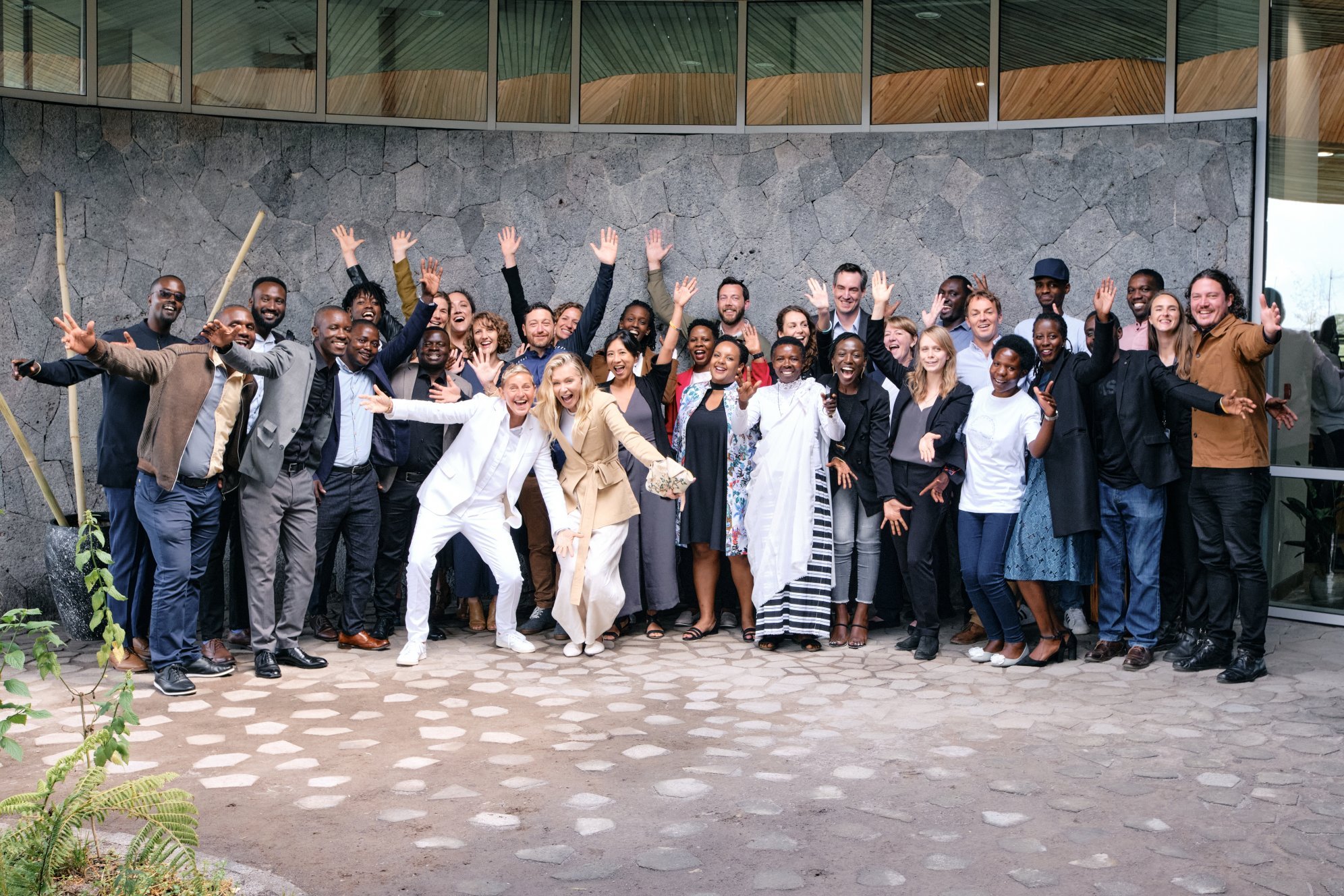
Project Team
Client: The Dian Fossey Gorilla Fund
Architect: MASS Design Group
Landscape Architect: TenxTen Studio and MASS Design Group
Civil Engineers: MASS Design Group and Oak Consulting Group
Structural Engineer: MASS Design Group
M&P Engineers: MASS Design Group
Electrical Engineers: BuroHappold Engineering
Environmental Engineering: Transsolar
Construction: MASS.Build, MASS Design Group
Constructed Wetland Consultants: Sherwood Design Engineers, Jacques Nsengiyumva
Furniture Design & Fabrication: MASS.Made, MASS Design Group
Exhibit & Wayfinding Design: MASS Design Group
Exhibit Fabrication: Formula D Interactive
Immersive Theater: HabitatXR
ICT & Security: Techno Engineering Company
Wayfinding & Signage: MASS Design Group
Media: MASS Design Group
